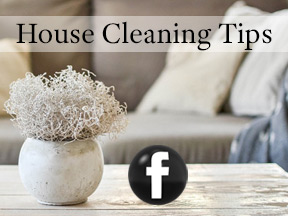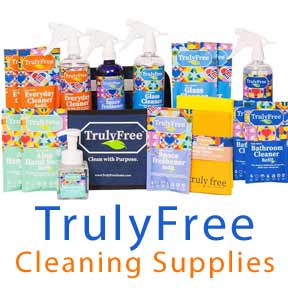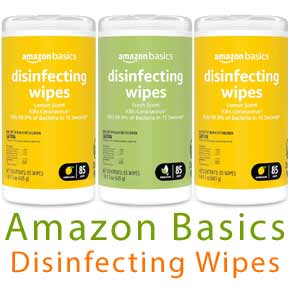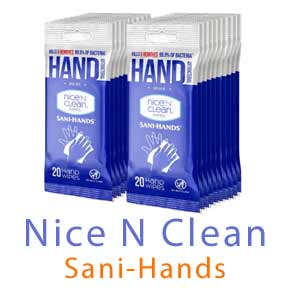Grandma’s Cleaning Habits to Avoid

Grandma’s Cleaning Secrets. The Good, the Risky, and What to Use Instead
Grandma’s house always smelled clean, the wood floors gleamed, and her laundry looked crisp and fresh. She did it all with a handful of simple tools – baking soda, vinegar, ammonia, wax paper, maybe even gasoline. Many of her cleaning tricks worked beautifully for the time, but our homes, materials, and cleaning products have changed dramatically since then – and some of Grandma’s cleaning habits to avoid just don’t fit in a modern home.
What Are Some of Grandma’s Cleaning Habits to Avoid
Some of Grandma’s tried-and-true cleaning methods were clever, while others were downright risky. Here’s a look at a few of grandmas cleaning habits to avoid that don’t belong in the modern home – and what to do instead.
Mixing Bleach With Ammonia or Vinegar
It might sound extreme, but people really did this – and some still do by accident. For much of the 20th century, bleach and ammonia were household staples. They were both powerful, inexpensive cleaners, and the thinking went that combining them would make an even stronger disinfectant.
Unfortunately, when bleach and ammonia are mixed together, it produces toxic gas. Mixing bleach with vinegar (or any acid) releases chlorine gas – a chemical once used in warfare. Even a small amount can cause coughing, watery eyes, and breathing problems.
Better Option
Stick to one cleaner at a time. If you need a disinfectant, diluted bleach (1 part bleach to 10 parts water) works on its own. For a natural cleaner, use vinegar and water – just never mix bleach and vinegar together.
Cleaning With Gasoline or Kerosene
It sounds shocking now, but in the late 1800s and early 1900s, gasoline and kerosene were popular cleaning solvents. Before modern detergents existed, people used them to remove grease, oil, or even stains from clothing and machinery. Early dry cleaners used petroleum-based solvents until safer chemical alternatives were developed.
The problem? Gasoline and kerosene are flammable, toxic, and give off fumes that can damage lungs and nervous systems. It didn’t take long for house fires and explosions to convince people there had to be a better way.
Better Option
Use rubbing alcohol or a safe, commercial degreaser for removing sticky or oily buildup. For fabrics, modern stain removers and enzyme-based cleaners do the job far more safely.
DIY Alternative
For a natural degreaser, mix:
- 2 cups warm water
- 1 tablespoon baking soda
- Few drops of dish soap
Apply with a sponge and rinse thoroughly.
Running Vinegar Through an Iron
Once upon a time, vinegar was the cure-all for mineral buildup in steam irons. While it can dissolve limescale, modern irons often contain protective coatings, rubber seals, and aluminum components that vinegar’s acidity can corrode or degrade over time.
Better Option
Use distilled water in your iron to prevent buildup from the start. If your iron does clog, most manufacturers sell a safe descaling solution or recommend a mild citric acid rinse instead of vinegar.
Using Vinegar on Hardwood Floors
Grandma’s vinegar and water mop was a cleaning classic, but hardwood floors today have advanced finishes that vinegar can strip or dull. The acid slowly eats away at the protective coating, leaving the surface looking cloudy or worn.
Better Option
Use a cleaner made specifically for hardwood floors – one that’s pH-neutral and safe for sealed surfaces. A microfiber mop and gentle cleaner will make your floors shine without harming the finish.
Murphy Oil Soap
If you prefer a more traditional cleaner, Murphy® Oil Soap can be used occasionally on sealed hardwood floors. Just be sure to dilute it properly, wring the mop out well so it’s only damp, and dry the floor immediately afterward. Avoid using it on unsealed, waxed, or oiled wood, where moisture can seep in and cause damage. For everyday cleaning, a modern residue-free hardwood cleaner is still the best choice to maintain your floor’s protective finish and natural glow.
DIY Alternative
If you prefer a homemade touch, mix:
- 2 cups warm water
- 1 teaspoon mild dish soap or castile soap
- Optional: a few drops of essential oil for scent
Use a lightly damp mop and dry immediately with a clean towel. Avoid vinegar, even diluted.
Wiping Windows With Newspaper
Grandma swore by cleaning windows with old newspapers, and back in the day it worked pretty well – ink formulas were oil-based and didn’t smear. But today’s newspaper ink is water-based and can leave black smudges on your hands, window frames, and glass. Plus, the paper fibers can scratch delicate window coatings.
Better Option
Use a microfiber cloth or squeegee with a streak-free glass cleaner. You’ll get sparkling windows without ink stains on your fingers.
DIY Alternative
If you love a homemade touch, mix your own streak-free window cleaner:
- 1 cup water
- 1 cup white vinegar
- 1 tablespoon rubbing alcohol (helps it dry fast and streak-free)
- Optional: a few drops of lemon or lavender essential oil for a fresh scent
Pour into a spray bottle, shake gently, and use with a lint-free cloth or microfiber towel. Remember to clean windows on a day the sun isn’t in full shine to avoid drying too fast and streaking.
Using Baking Soda on Every Surface
Baking soda remains a household hero, but it’s not right for every job. While it works beautifully on sinks and cookware, it’s slightly abrasive and can scratch polished surfaces like marble, stainless steel, or glass cooktops.
Better Option
Use a non-abrasive, pH-balanced cleaner formulated for the specific surface. Keep baking soda for odor control, grout, or baked-on messes – not your countertops.
DIY Alternative
For a safe, mild cleaner that’s effective on most surfaces without scratching, mix together:
- 2 cups warm water
- 1 tablespoon liquid dish soap
- 1 tablespoon white vinegar
A Quick Note About Vinegar
Vinegar is an all around favorite from Gramma’s cleaning toolkit, but it’s not safe for every surface. Avoid using it on natural stone like marble, granite, or limestone – the acid can dull the finish or cause etching over time. Stick to gentle, pH-balanced cleaners made for stone, and save the vinegar for glass, tile, and other sealed surfaces.
Overusing Furniture Polish and Wax
Furniture polish gave Grandma’s wood furniture its warm glow, but many older polishes contained wax and oils that built up over time. That residue attracts dust and leaves wood sticky or dull.
Better Option
Dust with a microfiber cloth regularly and use a high-quality wood cleaner or conditioner occasionally. Modern polishes protect wood without creating buildup.
Handling Borax or Washing Soda Without Gloves
Borax and washing soda have been used for over a century as multipurpose cleaners, disinfectants, and laundry boosters. But they’re alkaline and can irritate skin and eyes – something most people didn’t think much about decades ago.
Better Option
Always wear gloves when handling these products, or switch to gentler, plant-based cleaning powders that are easier on your hands.
Soaking Clothes in Salt Water to Prevent Color Fading
This old laundry trick came from the days when fabrics were dyed with natural pigments that could easily bleed. A salt soak helped “set” the color – but with modern, chemically fixed dyes, salt does very little. In fact, salt residue can stiffen fabric and leave it looking dull.
Better Option
Turn clothes inside out before washing, use cold water, and choose a detergent made for colors. Avoid overdrying in sunlight or high heat, which fades fabric faster than anything else.
DIY Alternative
Add a cup of white vinegar to the rinse cycle once a month – it helps remove detergent residue that can dull colors (and don’t worry, the vinegar smell won’t linger).
Club Soda to Remove Stains
Grandma often poured club soda on fresh spills – and while it helps loosen some light stains, it’s not the miracle cleaner it’s made out to be. Club soda’s fizz can lift some residue, but it lacks the stain-fighting ingredients needed for tougher spots like wine or grease.
Better Option
Use an enzyme-based stain remover or a hydrogen peroxide and dish soap solution for protein-based or oily stains.
DIY Alternative
Use on light-colored fabrics only, as hydrogen peroxide may lighten dark materials.
Mix together:
- 1 tablespoon dish soap
- 1 tablespoon hydrogen peroxide
- 2 tablespoons warm water
- Apply to the stain, let sit a few minutes, then blot clean
Air Sanitizing Laundry Indoors
Another one of grandma’s cleaning habits to avoid is hanging laundry indoors to “air out”. Although the thought may have been to make it smell fresher – it doesn’t sanitize or kill bacteria. In fact, if your home is humid, it can encourage mildew and musty odors.
Better Option
Wash regularly with detergent and dry clothing completely. For extra freshness, a quick 10-minute spin in the dryer works wonders.
Using Wax Paper as a Protective Liner
Before plastic storage bags and coated fabrics, some households used wax paper or similar liners between stored linens or between furniture and upholstery to prevent color transfer or moisture damage. It wasn’t as common as other cleaning tricks, but it was practical for the time – especially in damp climates or when fabrics weren’t colorfast.
Better Option
Use breathable cotton or muslin liners for stored bedding and linens. These prevent discoloration without trapping moisture, which can cause mildew or yellowing over time.
DIY Alternative
Cut pieces of cotton fabric, old pillowcases, or even parchment paper to fit your drawers. They’re washable, breathable, and easy to replace.
About Grandma’s Cleaning Habits to Avoid
Many of Grandma’s methods made sense for her time. She worked with what she had – and most of it came straight from the pantry. But over the years, chemistry, safety standards, and household materials have changed. The products that were once “miracle cleaners” can now harm modern surfaces or pose health risks we understand much better today. That’s why it’s helpful to know Grandma’s cleaning habits to avoid and when to swap them for safer, more effective alternatives.
By blending Grandma’s practicality with modern science, you can keep your home just as fresh and welcoming – minus the fumes, flammability, or guesswork.








